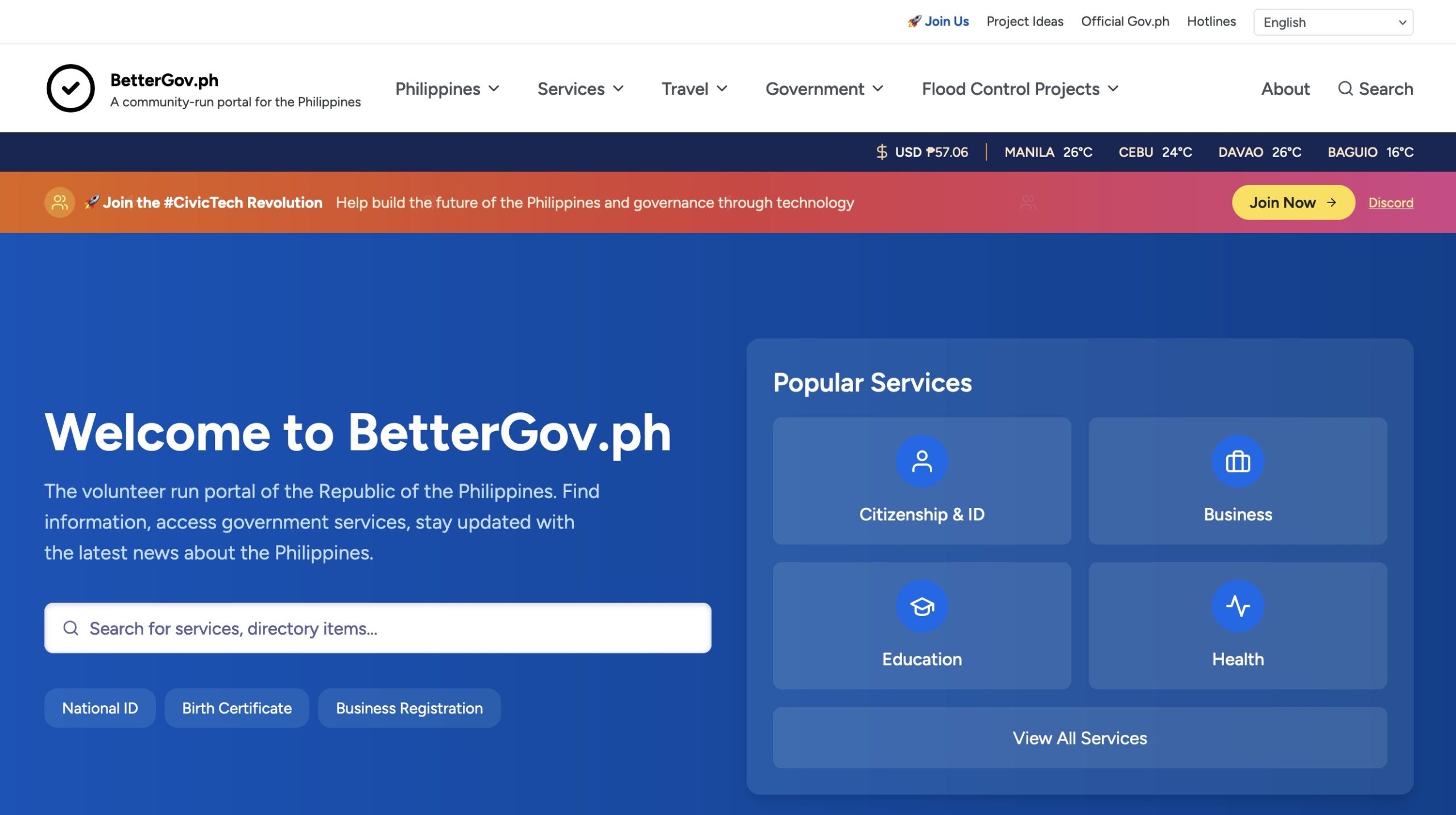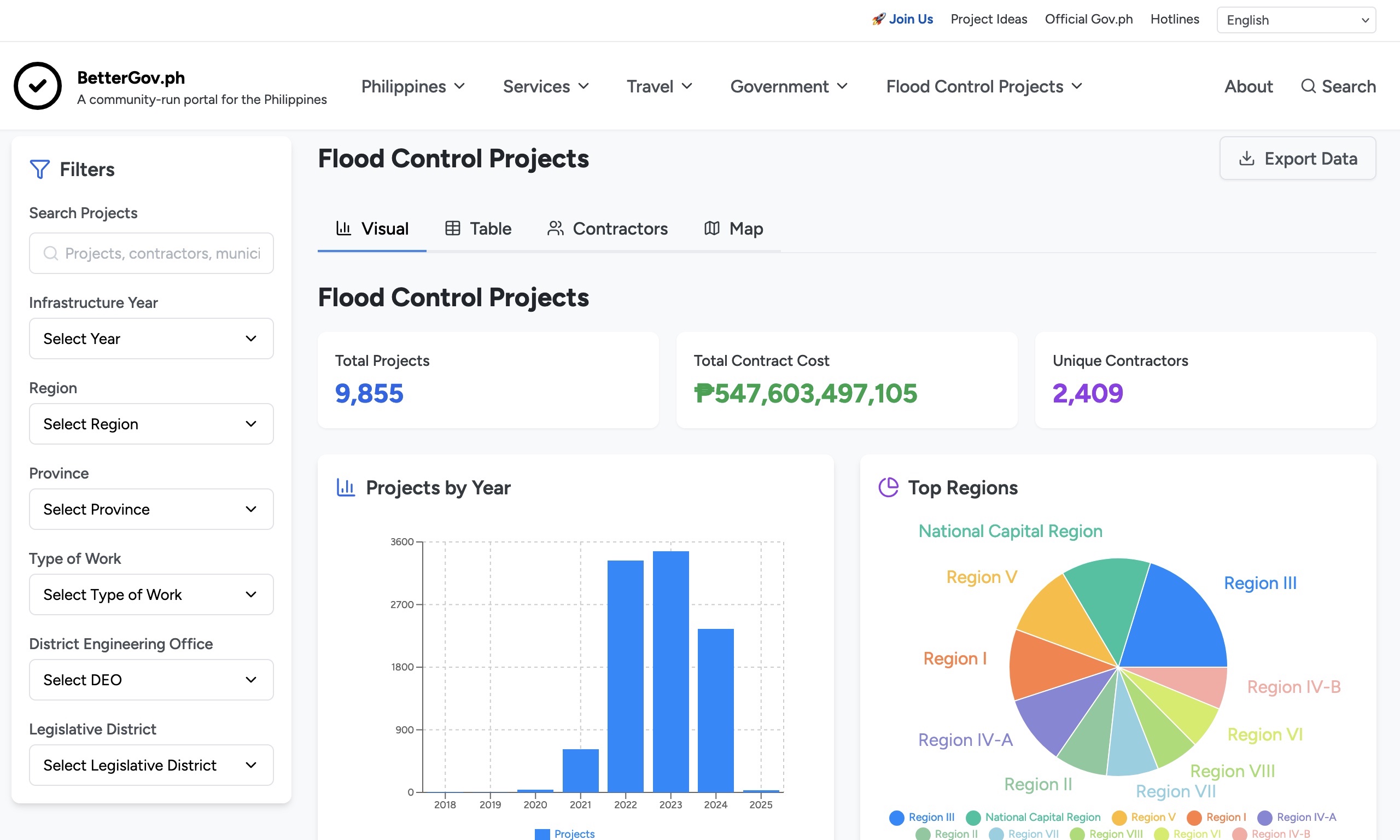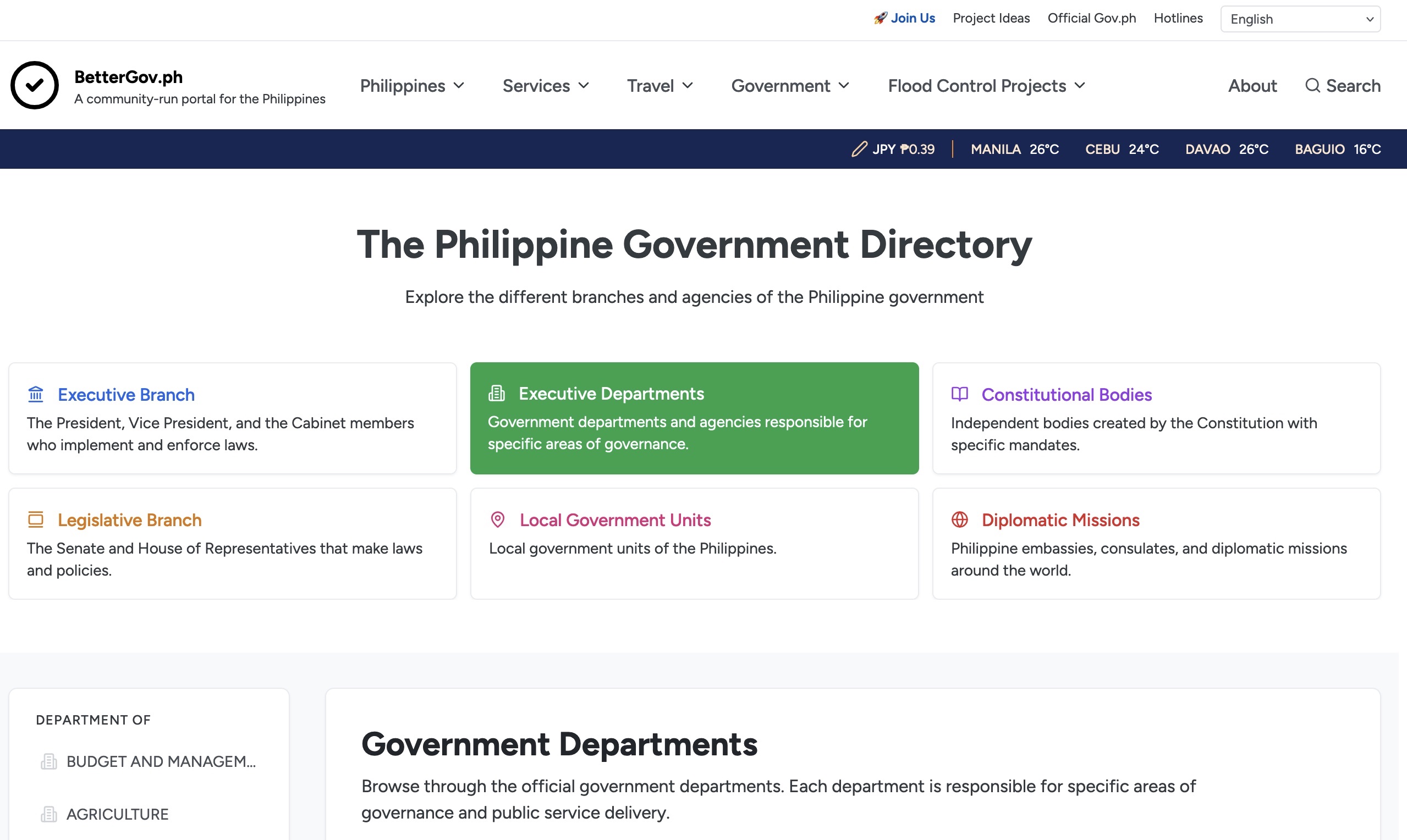It all started with frustration, but it moved quickly into action. In the middle of renewed public scrutiny over corruption and inefficiencies in public works, members of the Philippine tech and startup community are banding together to address a simpler, more solvable problem in the near term: how citizens access government services online.
“I’m angry, you’re angry, but we can contribute in our own ways, no matter how little it is,” wrote Jason Torres in announcing the BetterGov.ph project. “We can do amazing things together. Grassroots style. Open source,” said Torres, a Filipino entrepreneur and developer now based in London.

The proposition is intentionally modest yet ambitious: build a fast, accessible, volunteer-run portal that surfaces services and information without the usual friction – and do it all in public, with code, contributions, and debates out in the open. In an interview with Newsbytes.PH, Torres described how that frustration coalesced into a working prototype within days, drawing in volunteers from across the ecosystem.
The momentum is notable for a community project. As of early September 21, 2025, Torres reports the participant base has climbed to at least 710 people across channels – a mix of developers, designers, writers, translators, and accessibility advocates. This reflects how quickly the idea has resonated. The live site already demonstrates the core thesis: a service-first directory, agency wayfinding, and plainly written pages that aim to reduce the cognitive load for citizens finding what they need.
Users can browse by service category (e.g., certificates and IDs or health programs), drill down into government branches and departments, and see new “data” explorations that hint at future integrations. Notable is the highlight on flood control project data, especially amid the recent calls for better accountability in the use of public funds.

Speaking with TNGlobal, Torres emphasizes that the center of gravity is the community, not personalities, underscoring that traction matters only insofar as it converts into more hands improving the product. He is candid about what the next phase requires. Early stewardship is already visible in the way work is partitioned and made legible to newcomers – from issue labeling and contribution guidelines to the public “Join Us” funnel. The project is open source, and the community has already gained momentum on GitHub. Sustained traction will then tap into the organizers’ experience and skills in founding and growing tech startups.
The composition of the community is also widening beyond code. “We are very fortunate that people have been showing up with unique skill sets,” Torres tells TNGlobal. “From our Discord admins, GitHub moderators, user experience and design people, frontend and backend developers – all contributing. You can really sense how we’re unified with a single vision: build a better gov community.”
By day two, Torres adds, the project had already seen “so many pull requests, issues reported, ideas, data sources, threads – many conversations happening that it’s overwhelming but very encouraging … There is no ego as well.” That last point is key to sustaining volunteer velocity: a clearly articulated mission, consistent tone in reviews, and visible wins that make new contributors feel their time matters.
Even at this early stage, BetterGov.ph reflects choices that prioritize usability over ceremony. The services directory is organized by what citizens actually try to accomplish, not by agency org charts. The government directory clarifies relationships among branches and departments for those who need to navigate official channels. “Ideas” and “Join Us” pages route newcomers into either feature proposals or specific contributor roles, while an emerging “Data” section suggests how public datasets and dashboards may eventually complement static pages. These public surfaces mirror the repository’s internal discipline: tests, performance-minded decisions, and issues that keep work modular enough for parallel contribution.

To be clear, BetterGov.ph is not an official portal. Neither does it claim to be a drop-in replacement, even as it takes inspiration from the official GOV.PH portal, which is also the top-level domain for Philippine Government agencies. Rather, it is a concrete demonstration of what service-led, open development can look like in practice. The thesis is that good ideas can travel: components, patterns, and even content can be reused by agencies or watchdog groups, while citizens gain a working example against which to measure progress.
As the Newsbytes.PH piece notes, the launch catalyzed a broader conversation about civic tech collaboration and the culture of “shipping in public,” which in turn helps surface more contributors and more constructive scrutiny. What comes next will hinge on whether the project can turn early energy into durable governance and maintain the balance between speed and reliability that public-facing tools demand.
For readers and potential contributors, the on-ramp is straightforward: explore the live prototype, review the About page for the project’s mission, scan the Services and Government directories to see how information is structured today, and then head to the GitHub repository to file issues or open pull requests. More active users can head to the Discord server for real-time collaboration.
For non-engineers, the “Join Us” page lists editorial, translation, accessibility, and community roles that are just as critical to making the portal usable to the broadest possible public. If the first 48 hours are any indication, the work ahead will be less about persuading people to care and more about continuing to channel that care into a product citizens actually use.

